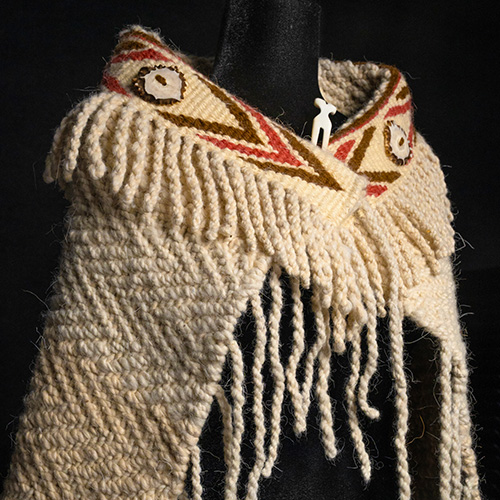In April 1956, Eisenhower was president. Elvis’s Heartbreak Hotel topped the charts. And the UW installed a time capsule in the recently completed Communications Building, with a plaque indicating that the capsule should be opened in 2007.
That time has come.
The Department of Communication will open the time capsule on April 26
during UW’s Washington Weekend and install a new capsule to be opened in
2057. Alumnus Tim Egan (‘81) will be the keynote speaker for the event, which will begin at 11 a.m. on the Communications Building’s first floor.
What can people expect to find in the capsule? If alumnus Bill Smith’s recollections are correct, an audiotape will be among the items. Smith, a 1957 journalism major, recalls being stopped on the way to class by an interviewer who was taping student statements for the capsule.

“You had very little time to think about it,” Smith recalls. “I remember my statement to be related to $30,000 as the annual salary for the CEO of NBC by the time the capsule was opened.”
Fellow journalism major Ken McGhee (‘57) doesn’t recall being taped for the capsule, but he does remember being in attendance when the box was locked. “There wasn’t a great deal of pomp,” he says, “but it was a big deal. It was like propelling something off into the future.”
Six current communication students will experience that same feeling. They have spent months developing materials for the new capsule, under the guidance of Professor Crispin Thurlow and graduate students Penelope Sheets and Peg Achterman. The students are earning credit through a research course, aptly titled “Thinking Outside the Box.”
“We’re trying to envision what people 50 years from now will find fascinating or amusing,” says Thurlow. “There will be images of communication now and predictions of communication in the future, which we all know will date very quickly and will probably end up seeming very quaint.”
The students have taken the lead in selecting and preparing materials for the capsule. Thurlow has encouraged them to think beyond the obvious — technologies of communication like iPods, cellphones, and laptops — and to include other aspects of communication. Students have taken that suggestion to heart.

“I now realize how many different ways people communicate to convey various messages—through the way they dress, their use of public space (such as graffiti), and the ways in which they speak,” says communication major Desiree Wilson, who is creating an “interactive scrapbook of advertisements” that reflect our current values.
Recognizing that existing technology will almost certainly be obsolete when the capsule is opened, students are including print materials along with materials on compact disk and in other formats. “We’ll include chargers for any electronic devices,” says Achterman. “We can probably trust that there will still be AC power in 50 years.”
The materials for the new capsule will be on display at the capsule-opening event, which is being planned by a committee of student interns (Coma Te, Karli Casto, and Megan Keller), staff, and alumni (Mike Peringer ‘57, Terry Tazioli ‘70, and Megan Coppersmith ‘04). The opening will also feature five classrooms—each representing one of the past five decades—highlighting the food, music, and communication materials of that era, with alumni “hosting” each room.
Ken McGhee is one alumnus who plans to be present at the capsule’s opening. “It seems like yesterday that the capsule was installed,” he says. “I recall being awed by the concept of 50 years from 1956. And here we are.”u
More Stories

A Healing Heart Returns
In February, the UW Symphony will perform a symphony that Coast Salish elder Vi Hilbert commissioned years ago to heal the world after the heartbreak of 9/11. The symphony was first performed by the Seattle Symphony in 2006.

Coast Salish Traditions are "Woven in Wool" at the Burke
A Burke Museum exhibit, co-curated by Coast Salish weavers and Burke curators, highlights the importance of weaving to Coast Salish communities.

Capturing the Sounds of Campus
With "University of Washington Soundscape," ethnomusicology and international studies major Leo Freedman has created an audio experience of the UW campus.